
SCD535
Register your product and get support at
www.philips.com/welcome
EN User manual 5
DA Brugervejledning 20
DE Benutzerhandbuch 35
EL Εγχειρίδιοχρήσης 52
ES Manual del usuario 71
FI Käyttöopas 87
FR Mode d’emploi 102
IT Manuale utente 118
NL Gebruiksaanwijzing 134
NO Brukerhåndbok 150
PT Manual do utilizador 165
SV Användarhandbok 182
TR Kullanımkılavuzu 197
Page is loading ...
Page is loading ...
Page is loading ...

1 Introduction
Congratulations on your purchase and welcome
support that Philips AVENT offers, register your
product at www.philips.com/welcome.
Philips AVENT is dedicated to producing
caring, reliable products that give parents the
reassurance they need. This Philips AVENT baby
monitor provides round-the-clock support
by ensuring you can always hear your baby
clearly without any distracting noise. The DECT
technology guarantees zero interference and a
crystal clear signal between the baby unit and the
parent unit. The temperature and humidity sensor
enables you to monitor the climate in your baby’s
room, and offers you personalised settings to help
keep your baby’s room healthy and comfortable.
The SCD535 baby monitor is equipped with an
ECO mode, which enables you to reduce the
energy consumption of the appliance without
losing contact with your baby.
2 General
description (Fig. 1)
A Parent unit
1 On/off button 3
2 Slot for belt clip
3 TALK button
4 MENU button
5 LINK light
6 Microphone
7 Loudspeaker
8 Menu and volume +/– buttons
9 OK button
10 Display
11 Sound level lights
12 Belt clip
13 Adapter
14 Small appliance plug
15 Charger
16 Charging light
17 Neck strap
18 Compartment for rechargeable battery
pack
19 Opening for neck strap
20 Lid of compartment for rechargeable
battery pack
21 Rechargeable battery pack (included)
B Baby unit
1 On/off button 3
2 PAGE button
3 Display
4 Power-on light
5 Volume +/– buttons
6 Nightlight button Q
7 Lullaby button K
8 Play/stop button E
9 Microphone
10 Adapter
11 Large appliance plug
12 Cooling vents
13 Loudspeaker
14 Temperature and humidity sensor
15 Socket for large appliance plug
16 Non-rechargeable batteries (not included)
17 Compartment for non-rechargeable
batteries
18 Lid of compartment for non-rechargeable
batteries
C Display
1 Temperature alert
2 Room temperature indication (Celcius or
Fahrenheit)
3 Sound alert
4 Humidity indication
5 Paging symbol
6 Lullaby symbol
7 Nightlight symbol
8 Battery symbol
9 ECO symbol
10 Volume/microphone sensitivity indications
• Other display indications (not shown):
• ’High’ = room temperature above
temperature set in menu
• ‘Low’ = room temperature below
temperature set in menu
• ‘Not linked’ = no connection between
units*
5
ENGLISH

6
• Except for the battery compartments, do not
open the housing of the baby unit and parent
unit in order to prevent electric shock.
• This appliance is not intended for use by
persons (including children) with reduced
physical, sensory or mental capabilities, or lack
of experience and knowledge, unless they
have been given supervision or instruction
concerning use of the appliance by a person
responsible for their safety.
• Children should be supervised to ensure that
they do not play with the appliance.
3.0.3 Caution
• Use and store the appliance at a temperature
between 7°C and 40°C.
• Do not expose the baby unit and parent unit
to extreme cold or heat or to direct sunlight.
Do not put the baby unit and the parent unit
close to a heating source.
• Make sure the baby unit and the cord are
always out of reach of the baby (at least 1
metre/3 feet away).
• Never place the baby unit inside the baby’s
bed or playpen.
• Never cover the parent unit and the baby unit
with anything (e.g. a towel or blanket). Always
make sure the cooling vents of the baby unit
are free.
• If you place the parent unit next to a
transmitter or other DECT appliance (e.g. a
DECT telephone or wireless router for the
internet), the connection with the baby unit
may be lost. Move the baby monitor further
away from the other wireless appliances until
the connection is restored.
• Switched-on mobile phones in the vicinity of
the baby monitor may cause interference with
the baby monitor.
• Radio interference is inevitable and may have
an effect on the sound quality of the baby
monitor.
3.0.4 General
• This baby monitor is intended as an aid. It is not
a substitute for responsible and proper adult
supervision and should not be used as such.
• ’Paused’ = lullaby is paused
• ‘Searching’ = units are searching for
connection*
• ‘Linked’ = units are linked*
• ’Talk’ = talk function is active
* This is only shown on the display of the
parent unit.
D Travel pouch
3 Important
Read this user manual carefully before you use the
appliance and save it for future reference.
3.0.1 Danger
• Never immerse any part of the baby monitor
in water or any other liquid.
• Do not place the appliance where water or
any other liquid can drip or splash onto it.
• Never put any object containing liquid on top
of the baby unit.
3.0.2 Warning
• Check if the voltage indicated on the adapters
of the baby unit and the charger corresponds
to the local mains voltage before you connect
the appliance.
• Only use the adapter supplied to connect the
baby unit to the mains.
• Only use the charger and adapter supplied to
charge the parent unit.
• The adapters contain a transformer. Do
not cut off the adapters to replace them
with other plugs, as this causes a hazardous
situation.
• If the adapters are damaged, always have them
replaced with one of the original type in order
to avoid a hazard. For the correct type, see
chapter ‘Replacement’.
• If the charger of the parent unit is damaged,
always have it replaced with one of the
original type.
• Never use the baby monitor in moist places
or close to water.

7
4 Preparing for use
4.1 Baby unit
You can use the baby unit from the mains or
on non-rechargeable batteries. Even if you are
going to use the unit from the mains, we advise
you to insert non-rechargeable batteries. This
guarantees automatic back-up in case of mains
failure.
4.1.1 Mains operation
1 Put the large appliance plug in the baby unit
and put the adapter in a wall socket (Fig. 2).
4.1.2 Operation on non-rechargeable
batteries
The baby unit runs on four 1.5V R6 AA batteries
(not included). We strongly advise you to use
Philips LR6 PowerLife batteries.
Do not use rechargeable batteries, as the baby
unit does not have a charging function.
Place batteries in the baby unit if you do not want
to use it from the mains or if you want to be sure
of backup power in case of mains failure. Replace
the batteries when the baby unit indicates that
the batteries are low (the empty battery symbol
appears).
B
Warning:
Unplug the baby unit and make sure your hands
and the unit are dry when you insert the non-
rechargeable batteries.
1 Remove the lid of the compartment for non-
rechargeable batteries (Fig. 3).
2 Insert four non-rechargeable batteries (Fig. 4).
D
Note:
Make sure the + and - poles point in the right
direction.
3 Reattach the lid (Fig. 5).
• Take every precaution to make sure that your
baby can sleep safely .
• The humidity and temperature
sensor only measures the temperature and
humidity in the baby room. It cannot be used
to control or adjust the temperature and
humidity in the baby room.
3.0.5 Important information about non-
rechargeable batteries and the
rechargeable battery pack
• Non-rechargeable batteries and the
rechargeable battery pack may explode
temperatures due to other causes.
• Always place a rechargeable battery pack
of the correct type in the parent unit to
avoid the risk of explosion. Do not use non-
rechargeable batteries to avoid the risk of
explosion.
• Always place non-recheargeable batteries of
the correct type in the baby unit to avoid the
risk of explosion. The baby unit does not have
a charging function.
• Make sure that your hands are dry when you
insert or replace non-rechargeable batteries
or the rechargeable battery pack.
• To avoid damage due to leakage of non-
rechargeable batteries or the battery pack:
1 Do not expose the appliance to
temperatures higher than 35°C.
2 Remove the rechargeable battery pack of
the parent unit and the non-rechargeable
batteries of the baby unit if you are not
going to use the appliance for one month
or more.
3 Do not leave empty non-rechargeable
batteries in the baby unit.
• Dispose of non-rechargeable batteries and
the rechargeable battery pack properly (see
chapter ‘Environment’).
3.0.6Electromagneticelds(EMF)
This Philips AVENT appliance complies with all
handled properly and according to the instructions
in this user manual, the appliance is safe to use
ENGLISH

8
D Note:
time, the operating time is less than 24 hours. The
battery pack only reaches its full capacity after you
have charged and discharged it four times.
D
Note:
When the parent unit is not in the charger, the
battery pack gradually discharges, even when the
parent unit is switched off.
5 Using the appliance
1 Place the parent unit and the baby unit in the
same room to test the connection (Fig. 10).
Make sure the baby unit is at least 1 metre/3
feet away from the parent unit.
2 Press and hold the on/off button 3on the
baby unit until the green power-on light goes
on. (Fig. 11)
D
Note:
The power-on light always lights up green,
even when there is no connection with the
parent unit.
• The nightlight lights up briey and then
fades out again.
• The display lights up and the battery symbol
appears on the display (Fig. 12).
• After 2 seconds the temperature and
humidity values are shown on the
display (Fig. 13).
3 Press and hold the on/off button 3on the
parent unit until the sound level lights light up
• The display goes on and the battery symbol
appears on the display (Fig. 15).
• The LINK light ashes red and the message
‘Searching’ appears on the display (Fig. 16).
• The LINK light on the parent unit
turns green and lights up continuously when
a connection has been established between
the baby unit and parent unit. The message
‘Linked’ appears on the display (Fig. 17).
4.2 Parent unit
4.2.1 Operation on rechargeable battery
pack
The parent unit comes with a rechargeable Li-ion
1000mAh battery pack.
Charge the parent unit before you use it for the
the battery is low (the empty battery symbol
The parent unit starts indicating that the battery
pack is low 30 minutes before the battery pack is
completely empty.
D
Note:
If the rechargeable battery pack is completely
empty, the parent unit automatically switches off
and loses contact with the baby unit.
1 Remove the lid of the compartment for the
rechargeable battery pack (Fig. 6).
2 Insert the rechargeable battery pack (Fig. 7).
3 Reattach the lid (Fig. 8).
4 Insert the small appliance plug into the
charger, put the adapter in a wall socket and
place the parent unit in the charger (Fig. 9).
• The charging light on the charger goes on.
• The display shows a charging battery symbol
to indicate that the parent unit is charging.
5 Leave the parent unit in the charger until the
battery pack is fully charged.
• During charging, the charging light on the
charger lights up continuously.
• When the battery pack is fully charged,
the display of the parent unit shows a full
battery symbol T.
• When you charge the parent unit for
disuse, switch it off and let it charge
continuously for at least 10 hours.
• Charging normally takes 4 hours, but
it takes longer when the parent unit is
switched on while charging. To keep the
charging time as short as possible, switch
off the parent unit during charging.
• When the battery pack is fully charged,
the parent unit can be used cordlessly for
up to 24 hours.

9
Dry materials Material
thickness
Loss of
range
Metal grilles or bars < 1cm /0.4in 90-100%
Metal or aluminium
sheets
< 1cm/0.4in 100%
For wet and moist materials, the range loss may
be up to 100%.
6 Features
The following features are described in chapter
‘Menu options’, as they can only be operated in
the menu of the parent unit:
• Adjusting microphone sensitivity
• Sound alert on/off
• Setting room temperature range (minimum
and maximum temperature)
• Temperature alert on/off
• Vibration alert on/off
• ECO mode on/off
• Setting temperature scale (Fahrenheit or
Celcius)
6.1 Adjusting loudspeaker
volume
1 Press the volume + or – button on the baby
unit until the desired loudspeaker volume for
the baby unit has been reached (Fig. 22).
2 Press the volume + or – button on the parent
unit until the desired loudspeaker volume for
the parent unit has been reached (Fig. 23).
• The displays give visual feedback on the
volume settings of the units: (Fig. 24)
1 minimum volume (parent unit and
baby unit)
2 maximum volume (parent unit and
baby unit)
D
Note:
If the volume is set to the lowest level, the
display shows ‘OFF’.
• After 2 seconds the message ‘Linked’
disappears and the temperature and
humidity values are shown on the
display. (Fig. 18)
• The rst time you switch on the parent
unit, the message ‘Language’ appears on
the display. Select the desired language
(see chapter ‘Menu options, section ‘Setting
display language’) (Fig. 19).
• If no connection is established, the LINK
light on the parent unit ashes red. The
parent unit beeps from time to time
and the message ‘Searching’ appears on
the display, followed by the message ‘Not
Linked’ (Fig. 20).
5.1 Positioning the baby
monitor
1 Place the baby unit at least 1 metre/3 feet
away from your baby (Fig. 21).
2 Place the parent unit within the operating
range of the baby unit. Make sure it is at least
1 metre/3 feet away from the baby unit to
avoid acoustic feedback (Fig. 10).
For more information on the operating range,
see section ‘Operating range’ below.
5.1.1 Operating range
The operating range of the baby monitor is 330
metres/1000 feet in open air. Depending on the
surroundings and other factors that may cause
interference, this range may be smaller. Indoors
the operating range is up to 50 metres/150 feet.
D
Note:
If the ECO mode is switched on, the operating
range of the baby monitor is also smaller. See
section ‘ECO mode’ in chapter ‘Menu options’.
Dry materials Material
thickness
Loss of
range
Wood, plaster, cardboard,
glass (without metal,
wires or lead)
< 30cm/12in 0-10%
Brick, plywood < 30cm/12in 5-35%
Reinforced concrete < 30cm/12in 30-100%
ENGLISH

10
E Tip:
Switch off the nightlight when you operate the
baby unit on non-rechargeable batteries. This saves
power.
6.5 Paging the parent unit
If you have misplaced the parent unit, you can use
the PAGE button on the baby unit to locate the
parent unit.
D
Note:
The paging function only works when the parent
unit is switched on.
1 Press the PAGE button on the baby
unit (Fig. 27).
• The message ‘Paging’ and the paging symbol
appear on the displays of the baby unit
and parent unit.
• The parent unit produces a paging alert
tone.
2 To stop the paging alert tone, press the PAGE
button again or press any button on the
parent unit.
6.6 Lullaby function
D Note:
You can also operate the lullaby function in the
menu of the parent unit (see chapter ‘Menu
options’, section ‘Lullaby function’).
1 Press the play/stop button Eon the
baby unit to play the currently selected
lullaby. (Fig. 28)
2 To select another lullaby, press the lullaby
button Kon the baby unit within 2 seconds to
toggle through the list of lullabies. (Fig. 29)
D
Note:
If you do not press the lullaby button Kfor
more than 2 seconds, the lullaby shown on
the display starts to play.
• The number of the lullaby appears on the
display together with the lullaby symbol K.
• The selected lullaby is repeated 5 times in
a row.
• When you select ‘play all’, all 5 lullabies are
played once.
D Note:
If the volume is set to a high level, the units
consume more power.
6.2 Talk function
You can use the TALK button on the parent unit
to talk to your baby (e.g. to comfort your baby).
1 Press and hold the TALK button and talk
clearly into the microphone from a distance of
15-30cm (Fig. 25).
• The green LINK light starts ashing and the
message ‘Talk’ appears on the display.
2 Release the TALK button when you have
6.3 Sound level lights
The parent unit continuously monitors the sound
level in your baby´s room and the sound level
lights let you know if there is any activity. If your
baby cries, you see the sound level lights light up
on the parent unit.
• As long as the baby unit does not detect a
sound, all sound level lights on the parent unit
are out.
• When the baby unit picks up a sound, one or
more sound level lights on the parent unit go
on. The number of lights that go on is related
to the loudness of the sound picked up by the
baby unit.
6.4 Nightlight
D Note:
You can also switch the nightlight on and off in
the menu of the parent unit (see chapter ‘Menu
options’, section ‘Nightlight’).
1 Press the nightlight button Qon the baby unit
to switch on the nightlight. (Fig. 26)
• Q appears on the display of the parent unit.
2 Press the nightlight button Qagain to switch
off the nightlight.
• The nightlight dims gradually before it goes
out completely.
• Qdisappears from the display of the parent
unit.

11
D Note:
The message ‘Not Linked’ also appears on the
display of the parent unit when the baby unit is
switched off.
7 Menu options
All functions can be operated on the parent unit,
but some functions can also be operated on
the baby unit.
7.1 Menu operation - general
explanation
D Note:
Menu functions can only be operated when a
connection has been established between the
baby unit and the parent unit.
1 Press the MENU button to open the
menu (Fig. 30).
• The rst menu option appears on the
display.
2 Use the – and + buttons to select the desired
menu option (Fig. 31).
D
Note:
The arrow indicates in which direction you
can navigate.
3
4 Use the + and - buttons to select the desired
setting.
5
• The new setting ashes once. The message
‘saved’ also ashes once and then
disappears from the display.
6 Press the MENU button again to exit the
menu.
3 To stop the lullaby, press the play/stop button
E on the baby unit again. (Fig. 28)
4 To select another lullaby when a lullaby is
playing:
• Press the lullaby button K on the baby
unit within 2 seconds to toggle through
the list of lullabies.
D
Note:
If you do not press the lullaby button Kfor
more than 2 seconds, the lullaby shown
on the display starts to play.
6.7 Humidity
When there is a connection between the baby
unit and the parent unit, the humidity level is
shown on the display of both units.
The optimal humidity level is between 40%
and 60%. It is very important to maintain the
correct humidity level as it helps to protect your
baby from irritation of the mucous membranes,
dry and itchy skin, chapped lips and a dry, sore
throat. When the mucous membranes do not
function optimally, they cannot give your baby full
protection from all kinds of germs. This increases
the chance of your baby catching a cold or the
mould and bacteria.
help you improve the air quality and maintain a
comfortable humidity level in your baby’s room.
Contact your local Philips Consumer Care Centre
for stockists.
D
Note:
The baby monitor only measures the
humidity level. You cannot adjust the humidity level
with the baby monitor.
6.8 Out of range alert
When the parent unit is out of range of the baby
unit, the parent unit beeps from time to time and
the messages ‘Searching’ and ‘Not linked’ appear
on the display. The LINK light on the parent
ENGLISH

12
7.3 Nightlight on/off
1 Select ‘Light’ with the + and - buttons.
2
3 If the nightlight is off, the display shows
‘On?’. Press the OK button to switch on the
nightlight. If the nightlight is on, the display
shows ‘Off?’. Press the OK button to switch off
the nightlight.
7.4 Lullaby function
7.4.1 Selecting a lullaby
1 Select ‘Lullaby’ with the + and - buttons.
2
3 Press the + button once or several times to
to select ‘Play All’.
4
lullabies, it is played 5 times in a row.
When you select ‘play all’, all 5 lullabies are
played once.
7.4.2 Switching to another lullaby
1 Press the + button to choose another lullaby
from the list.
2
7.4.3 Pausing a lullaby
1 Press the OK button.
• The message ‘Paused’ appears on the
display.
2 Press the OK button again to resume the
lullaby.
If you do not resume the lullaby within 30
seconds, the lullaby function switches off
automatically. The message ‘Paused’ and the
lullaby symbol disappear from the display.
7.4.4 Stopping a lullaby
1 Press the + button to select ‘Stop’ from the
list.
2
7.2 ECO mode
D Note:
You can only switch the ECO mode on and off
in the menu of the parent unit.
You can use the ECO mode to reduce the energy
consumption of the appliance. Monitoring your
baby from a small distance requires less
transmission power and less electrical power
than monitoring your baby from a large distance.
When you monitor your baby from a small
distance, you can activate the ECO mode.
In the ECO mode, the appliance consumes
less energy, but still ensures that you can always
hear your baby clearly without any distracting
noise. Using the baby monitor in the ECO mode
helps you to preserve the environment.
D
Note:
The operating range of the baby monitor when
it is operated in the ECO mode is 260 meters
in open air. Depending on the surroundings and
other factor that may cause interference, this
range may be smaller.
1 Select ‘ECO mode’ with the + and -
buttons (Fig. 31).
2
3 If the ECO mode is off, the display shows
‘On?’. Press the OK button to switch on
the ECO mode. If the ECO mode is on, the
display shows ‘Off?’. Press the OK button to
switch off the ECO mode.
• If you have set the ECO mode to ‘on’, the
parent unit switches off and on again. The
ECO mode symbol appears on the display of
the baby unit and the parent unit to indicate
that both units now operate in ECO mode.
D
Note:
The connection between parent and baby
unit may be lost when the ECO mode is
switched on. If this happens, the operating
range may be too large for the ECO mode. In
this case, either reduce the operating range or
switch off the ECO mode.

13
5 If the alert is off, the display shows ‘On?’. Press
the OK button to switch on the alert. If the
alert is on, the display shows ‘Off?’. Press the
OK button to switch off the alert.
• If you have set the sound alert to ‘on’, the
sound alert symbol ( g) appears on the
display of the parent unit.
7.7 Setting room temperature
range
D Note:
You can only adjust the temperature range in the
menu of the parent unit.
A baby will sleep comfortably in a room heated
to a temperature between 16°C and 20°C. This is
important, since a baby cannot regulate its body
temperature as well as an adult. A baby needs
more time to adjust to temperature changes.
If you do not set a temperature range, the baby
monitor alerts you when the temperature in your
baby’s room drops below 14°C or rises above
35°C. In this case, the backlight of the parent unit
display goes on and ‘High’ or ‘Low’ appears on
the display. To change the default minimum and
maximum temperature, follow the instructions
below.
D
Note:
The temperature of the baby’s room is shown on
the display of both units when they are linked.
1 Select ‘Temperature’ with the + and - buttons.
2
3 Select ‘Range’ with the + and - buttons.
4
5 Set the desired minimum temperature with
the + and - buttons.
6
7 Set the desired maximum temperature with
the + and - buttons.
8
• The message ‘Saved’ appears on the display.
7.5 Adjusting microphone
sensitivity
D Note:
You can only adjust the microphone sensitivity in
the menu of the parent unit.
You can set the microphone sensitivity of the
baby unit to the desired level. You can only change
the microphone sensitivity when a connection
between the baby unit and the parent unit has
been established, i.e. when the LINK light on the
parent unit lights up green continuously.
1 Select ‘Sensitivity’ with the + and - buttons.
2
3 Select the desired microphone sensitivity
level for the baby unit with the + and -
buttons. (Fig. 24)
1 Minimum sensitivity level
2 Maximum sensitivity level
4
• The message ‘Saved’ appears on the display.
D
Note:
When the microphone sensitivity of the baby unit
is set to a high level, it picks up more sounds and
therefore transmits more often. As a result, the
units consume more power and the operating
time of the battery is shorter.
7.6 Sound alert on/off
D Note:
You can only switch the sound alert on and off in
the menu of the parent unit.
This feature allows you to monitor your baby silently.
It enables you to switch off the volume on your
parent unit and still be alerted if your baby cries.
If the sound alert is switched on, the parent unit
beeps as soon as the fourth sound level light lights
up while the volume is switched off. In addition, the
backlight of the parent unit display goes on and the
sound alert symbol ( g
1 Select ‘Alert settings’ with the + and - buttons.
2
3 Select ‘Sound alert’ with the + and - buttons.
4
ENGLISH

14
7.10 Setting display language
1 Select ‘Settings’ with the + and - buttons.
2
3 Select ‘Language’ with the + and - buttons.
4
5 Select the desired language with the + and -
buttons.
6
7.11 Setting temperature scale
D Note:
You can only set the temperature scale in the
menu of the parent unit.
You can set the temperature scale either to
Celsius (C) or Fahrenheit (F).
1 Select ‘Settings’ with the + and - buttons.
2
3 Select ‘Temp scale’ with the + and - buttons.
4
5 Select ‘Celsius’ or ‘Fahrenheit’ with the + and -
buttons.
7.12 Reset function
This function in the menu of the parent unit
allows you to reset both the parent unit and the
baby unit to the default settings at the same time.
You can use this function if problems occur that
you cannot solve by following the suggestions
in chapter ‘Frequently asked questions’.
1 Select ‘Settings’ with the + and - buttons.
2
3 Select ‘Reset’ with the + and - buttons.
4
• The message ‘Conrm?’ appears on the
display of the parent unit.
5
• The parent unit switches off and then
switches on again.
• The units have now both been reset to the
default factory settings.
7.8 Temperature alert on/off
D Note:
You can only switch the temperature alert on and
off in the menu of the parent unit.
D
Note:
If the temperature alert is activated too often,
reduce the set minimum temperature and/or
increase the set maximum temperature (see
‘Setting room temperature range’).
If the temperature alert is switched on, the parent
unit beeps if the actual room temperature exceeds
the set maximum temperature or drops below the
set minimum temperature. In addition, the backlight
of the parent unit display goes on, the temperature
alert symbol ( t
on the display. If no minimum and maximum
temperatures have been set, the temperature
alert is given when the room temperature drops
below 14°C or rises above 35°C.
1 Select ‘Temperature’ with the + and - buttons.
2
3 Select ‘Alert’ with the + and - buttons.
4
5 If the alert is off, the display shows ‘On?’. Press
the OK button to switch on the alert. If the
alert is on, the display shows ‘Off?’. Press the
OK button to switch off the alert.
7.9 Vibration alert on/off
D Note:
You can only switch the vibration alert on and off
in the menu of the parent unit.
If the vibration alert is switched on, the parent
unit vibrates as soon as the fourth sound level
light lights up while the volume is switched off.
1 Select ‘Alert settings’ with the + and - buttons.
2
3 Select ‘Vibration’ with the + and - buttons.
4
5 If the vibration alert is off, the display shows
‘On?’. Press the OK button to switch on the
vibration alert. If the vibration alert is on, the
display shows ‘Off?’. Press the OK button to
switch off the vibration alert.

15
9 Cleaning and
maintenance
B Warning:
Do not immerse the parent unit or the baby unit
in water and do not clean them under the tap.
B
Warning:
Do not use cleaning spray or liquid cleaners.
1 Unplug the baby unit if it is connected to the
mains and take the parent unit out of the
charger.
2 Clean the parent unit and the baby unit with a
damp cloth.
B
Warning:
Make sure the parent unit is dry before you
put it back into the plugged-in charger.
3 Clean the charger with a dry cloth.
4 Clean the adapters with a dry cloth.
10 Storage
• You can use the travel pouch to store the
baby monitor while you travel.
• When you are not going to use the baby
monitor for some time, remove the non-
rechargeable batteries from the baby unit and
remove the rechargeable battery pack from
the parent unit. Store the parent unit, the baby
unit, the charger of the parent unit and the
adapters in the travel pouch supplied.
7.12.1 Default settings
Parent unit
• Vibration alert: off
• Language: English
• Loudspeaker volume: 1
• Microphone sensitivity: 5
• Sound alert: off
• Temperature alert: off
• ’Temperature low’ alert: 14°C
• ’Temperature high’ alert: 35°C
• Temperature scale: Celsius
• ECO mode: off
Baby unit
• Loudspeaker volume: 3
• Nightlight: off
• Lullaby: off
8 Accessories
8.1 Belt clip and neck strap
charged, you can take the unit with you inside
and outside the house if you attach the unit to
your belt or waistband with the belt clip or if you
hang it around your neck with the neck strap. This
allows you to monitor your baby while you are
moving around.
8.1.1 Connecting the belt clip
1 Snap the belt clip onto the parent
unit (Fig. 33).
8.1.2 Disconnecting the belt clip
1 Pull the belt clip off the parent unit.
8.1.3 Connecting the neck strap
1 Insert the end loop of the neck strap through
the hole behind the strap post. Thread the
neck strap through the end loop and pull the
neck strap tight (Fig. 34).
8.1.4 Disconnecting the neck strap
1 Pass the neck strip through the end loop and
pull the end loop out of the hole behind the
strap post.
ENGLISH

16
12 Environment
• Do not throw away the appliance with the
normal household waste at the end of its life,
recycling. By doing this, you help to preserve
the environment (Fig. 35).
• Non-rechargeable batteries and battery
packs contain substances that may pollute
the environment. Do not throw away non-
rechargeable batteries and battery packs
with the normal household waste, but
Always remove non-rechargeable batteries
and battery packs before you discard and
point. (Fig. 36)
13 Guarantee and
service
If you need service or information or if you have a
problem, please visit the Philips AVENT website at
www.philips.com/welcome or contact the Philips
its phone number in the worldwide guarantee
your country, go to your local Philips dealer.
11 Replacement
11.1 Baby unit
11.1.1 Batteries
Only replace the non-rechargeable batteries of
the baby unit with four 1.5V R6 AA batteries.
D
Note:
We strongly advise you to use Philips non-
rechargeable batteries.
11.1.2 Adapter
Only replace the adapter of the baby unit with
an adapter of the original type.You can order a
new adapter from your dealer or a Philips service
centre.
• UK only: SSA-5W-09 UK 075040F
• Other countries: SSA-5W-09 EU 075040F
11.2 Parent unit
11.2.1 Battery pack
Only replace the battery pack of the parent unit
with a Li-ion 1000mAh battery pack.
11.2.2 Adapter
Only replace the adapter of the parent unit
charger with an adapter of the original type. You
can order a new adapter from your dealer or a
Philips service centre.
• UK only: SSA-5W-09 UK 075050F
• Other countries: SSA-5W-09 EU 075050F

17
Why does the LINK light on the parent unit
light up red continuously and why is the message
‘Searching’ shown on the display?
• The baby unit and the parent unit are out
of range of each other. Move the parent unit
closer to the baby unit.
• The baby unit may be switched off. Switch on
the baby unit.
• The ECO mode is switched on, but the
operating range is too large. Move the parent
unit closer to the baby unit or switch off the
ECO mode.
Whydoesthebatterysymbolashonthe
display of the baby unit?
The non-rechargeable batteries of the baby unit
are running low. Replace the non-rechargeable
batteries or connect the baby unit to the mains
(see chapter ‘Preparing for use’).
Why does the parent unit beep?
If the parent unit beeps while the LINK light
lights up red continuously and the message
‘Searching’ is shown on the display, the
connection with the baby unit is lost. Move the
parent unit closer to the baby unit.
• If the parent unit beeps and the battery symbol
on the display is empty, the rechargeable
battery pack of the parent unit is running low.
Recharge the rechargeable battery pack.
• If you have switched off the volume while
the sound alert is on, the parent unit beeps
whenever the fourth sound level light lights
up because the baby unit has picked up a
sound.
• If you have set the room temperature range on
the parent unit and the temperature alert is on,
the parent unit beeps when the temperature
drops below the set level or below 14°C or
when the temperature rises above the set level
or above 35°C.
• The baby unit may be switched off. Switch on
the baby unit.
14 Frequently asked
questions
This chapter lists the questions most frequently
answer to your question, contact the Consumer
Care Centre in your country.
What is ECO mode? How does this mode help
the environment?
The ECO mode has been developed to enable
you to reduce your energy consumption.
Monitoring your baby from a small distance
requires less power than monitoring your baby
from a large distance. When you monitor your
baby from a small distance, you can activate the
ECO mode. By switching on the ECO mode,
your baby monitor uses less energy and is
therefore more enviornment-friendly.
Why don’t the power-on light of the baby unit
and the LINK light of the parent unit come on
when I press the on/off buttons of the units?
• Perhaps the rechargeable battery pack of the
parent unit is empty and the parent unit is
not in the plugged-in charger. Insert the small
appliance plug into the charger, put the adapter
of the charger in a wall socket and place the
parent unit in the charger. Then press the on/
off button to establish connection with the baby
unit.
• Perhaps the non-rechargeable batteries of the
baby unit are empty and the baby unit is not
connected to the mains. Replace the non-
rechargeable batteries or connect the baby unit
to the mains. Then press the on/off button to
establish connection with the parent unit.
• If the LINK light on the parent unit still does not
units to their default settings.
ENGLISH

18
Why do the non-rechargeable batteries of the
baby unit run low quickly?
• The microphone sensitivity level of the baby
unit may be set too high, which causes the
baby unit to transmit more often. Decrease the
microphone sensitivity level in the menu of the
parent unit.
• The volume on the baby unit may be set too
high, which causes the baby unit to consume a
lot of energy. Decrease the volume of the baby
unit.
• You may have set a maximum room
temperature that is lower than the actual room
temperature or a minimum room temperature
that is higher than the actual room temperature.
In this case the display is lit all the time, which
increases the power consumption of the baby
unit. This causes the non-rechargeable batteries
of the baby unit to run low quickly.
• Perhaps you have switched on the nightlight. If
you want to use the nightlight, we advise you to
run the baby unit on mains power.
Why does the charging time of the parent unit
exceed 4 hours?
The parent unit may be switched on during
charging. Switch off the parent unit during
charging.
Thespeciedoperatingrangeofthebaby
monitor is 330 metres/1000 feet. Why does my
baby monitor manage a much smaller distance
than that?
•
open air. Inside your house, the operating range
is limited by the number and type of walls and/
or ceilings in between. Inside the house, the
operating range is up to 50 metres/150 feet.
• The ECO mode is switched on. When you
operate the baby unit in ECO mode, the
operating range is 260 meters/800 feet in open
air. Inside your house, the operating range is
limited by the number and type of walls and/or
ceilings in between. Move the parent unit closer
to the baby unit or switch off the ECO mode.
Why does the appliance produce a high-pitched
noise?
• The units may be too close to each other. Make
sure the parent unit and the baby unit are at
least 1 metre/3 feet away from each other.
• The volume of the parent unit may be set too
high. Decrease the volume of the parent unit.
Why don’t I hear a sound/Why can’t I hear
my baby cry?
• The volume of the parent unit may be set
too low or may be switched off. Increase the
volume of the parent unit.
• The microphone sensitivity level of the baby
unit may be set too low. Set the microphone
sensitivity level to a higher level in the menu of
the parent unit.
• The baby unit and the parent unit may be out
of range of each other. Reduce the distance
between the units.
Why does the parent unit react too quickly to
other sounds?
• The baby unit also picks up other sounds than
those of your baby. Move the baby unit closer
to the baby (but observe the minimum distance
of 1 metre/3 feet).
• The microphone sensitivity level of the baby
unit may be set too high. Decrease the
microphone sensitivity level in the menu of the
parent unit.
Why does the parent unit react slowly to the
baby’s crying?
The microphone sensitivity level of the
baby unit may be set too low. Increase the
microphone sensitivity level of in the menu of
the parent unit.

19
Why doesn’t the battery symbol appear on
the display of the parent unit when I start to
recharge the parent unit?
It may take a few minutes before the battery
symbol appears on the display of the parent
time or after a long period of disuse.
Why is the connection lost every now and then?
Why are there sound interruptions?
• The baby unit and the parent unit are probably
close to the outer limits of the operating
range. Try a different location or decrease the
distance between the units. Please note that
it takes about 30 seconds each time before a
connection between the units is established.
• You may have placed the parent unit next to a
transmitter or other DECT appliance, such as
a DECT telephone or other 1.8GHz/1.9GHz
baby monitor. Move the parent unit away from
the other appliances until the connection is
re-established.
What happens during a power failure?
it continues to operate during a power failure,
both inside and outside the charger. If there are
batteries in the baby unit, it also continues to
operate during a power failure.
Is my baby monitor secure from eavesdropping
and interference?
The DECT technology of this baby monitor
guarantees no interference from other
equipment and no eavesdropping.
The operating time of the parent unit is
supposed to be up to 24 hours. Why is
the operating time of my parent unit shorter?
• When the rechargeable battery pack of the
the operating time is less than 24 hours. The
rechargeable battery pack only reaches its full
capacity after you have charged and discharged
it at least four times.
• The volume of the parent unit may be set too
high, which causes the parent unit to consume
a lot of energy. Decrease the volume of the
parent unit
• The microphone sensitivity level of the baby
unit may be set too high, which causes the
parent unit to consume a lot of energy.
Decrease the microphone sensitivity level in the
menu of the parent unit.
ENGLISH
Page is loading ...
Page is loading ...
Page is loading ...
Page is loading ...
Page is loading ...
Page is loading ...
Page is loading ...
Page is loading ...
Page is loading ...
Page is loading ...
Page is loading ...
Page is loading ...
Page is loading ...
Page is loading ...
Page is loading ...
Page is loading ...
Page is loading ...
Page is loading ...
Page is loading ...
Page is loading ...
Page is loading ...
Page is loading ...
Page is loading ...
Page is loading ...
Page is loading ...
Page is loading ...
Page is loading ...
Page is loading ...
Page is loading ...
Page is loading ...
Page is loading ...
Page is loading ...
Page is loading ...
Page is loading ...
Page is loading ...
Page is loading ...
Page is loading ...
Page is loading ...
Page is loading ...
Page is loading ...
Page is loading ...
Page is loading ...
Page is loading ...
Page is loading ...
Page is loading ...
Page is loading ...
Page is loading ...
Page is loading ...
Page is loading ...
Page is loading ...
Page is loading ...
Page is loading ...
Page is loading ...
Page is loading ...
Page is loading ...
Page is loading ...
Page is loading ...
Page is loading ...
Page is loading ...
Page is loading ...
Page is loading ...
Page is loading ...
Page is loading ...
Page is loading ...
Page is loading ...
Page is loading ...
Page is loading ...
Page is loading ...
Page is loading ...
Page is loading ...
Page is loading ...
Page is loading ...
Page is loading ...
Page is loading ...
Page is loading ...
Page is loading ...
Page is loading ...
Page is loading ...
Page is loading ...
Page is loading ...
Page is loading ...
Page is loading ...
Page is loading ...
Page is loading ...
Page is loading ...
Page is loading ...
Page is loading ...
Page is loading ...
Page is loading ...
Page is loading ...
Page is loading ...
Page is loading ...
Page is loading ...
Page is loading ...
Page is loading ...
Page is loading ...
Page is loading ...
Page is loading ...
Page is loading ...
Page is loading ...
Page is loading ...
Page is loading ...
Page is loading ...
Page is loading ...
Page is loading ...
Page is loading ...
Page is loading ...
Page is loading ...
Page is loading ...
Page is loading ...
Page is loading ...
Page is loading ...
Page is loading ...
Page is loading ...
Page is loading ...
Page is loading ...
Page is loading ...
Page is loading ...
Page is loading ...
Page is loading ...
Page is loading ...
Page is loading ...
Page is loading ...
Page is loading ...
Page is loading ...
Page is loading ...
Page is loading ...
Page is loading ...
Page is loading ...
Page is loading ...
Page is loading ...
Page is loading ...
Page is loading ...
Page is loading ...
Page is loading ...
Page is loading ...
Page is loading ...
Page is loading ...
Page is loading ...
Page is loading ...
Page is loading ...
Page is loading ...
Page is loading ...
Page is loading ...
Page is loading ...
Page is loading ...
Page is loading ...
Page is loading ...
Page is loading ...
Page is loading ...
Page is loading ...
Page is loading ...
Page is loading ...
Page is loading ...
Page is loading ...
Page is loading ...
Page is loading ...
Page is loading ...
Page is loading ...
Page is loading ...
Page is loading ...
Page is loading ...
Page is loading ...
Page is loading ...
Page is loading ...
Page is loading ...
Page is loading ...
Page is loading ...
Page is loading ...
Page is loading ...
Page is loading ...
Page is loading ...
Page is loading ...
Page is loading ...
Page is loading ...
Page is loading ...
Page is loading ...
Page is loading ...
Page is loading ...
Page is loading ...
Page is loading ...
Page is loading ...
Page is loading ...
Page is loading ...
Page is loading ...
Page is loading ...
Page is loading ...
Page is loading ...
Page is loading ...
Page is loading ...
Page is loading ...
Page is loading ...
Page is loading ...
Page is loading ...
Page is loading ...
Page is loading ...

0979
© 2012 Koninklijke Philips Electronics N.V.
All rights reserved.
4222.005.0001.4
-
 1
1
-
 2
2
-
 3
3
-
 4
4
-
 5
5
-
 6
6
-
 7
7
-
 8
8
-
 9
9
-
 10
10
-
 11
11
-
 12
12
-
 13
13
-
 14
14
-
 15
15
-
 16
16
-
 17
17
-
 18
18
-
 19
19
-
 20
20
-
 21
21
-
 22
22
-
 23
23
-
 24
24
-
 25
25
-
 26
26
-
 27
27
-
 28
28
-
 29
29
-
 30
30
-
 31
31
-
 32
32
-
 33
33
-
 34
34
-
 35
35
-
 36
36
-
 37
37
-
 38
38
-
 39
39
-
 40
40
-
 41
41
-
 42
42
-
 43
43
-
 44
44
-
 45
45
-
 46
46
-
 47
47
-
 48
48
-
 49
49
-
 50
50
-
 51
51
-
 52
52
-
 53
53
-
 54
54
-
 55
55
-
 56
56
-
 57
57
-
 58
58
-
 59
59
-
 60
60
-
 61
61
-
 62
62
-
 63
63
-
 64
64
-
 65
65
-
 66
66
-
 67
67
-
 68
68
-
 69
69
-
 70
70
-
 71
71
-
 72
72
-
 73
73
-
 74
74
-
 75
75
-
 76
76
-
 77
77
-
 78
78
-
 79
79
-
 80
80
-
 81
81
-
 82
82
-
 83
83
-
 84
84
-
 85
85
-
 86
86
-
 87
87
-
 88
88
-
 89
89
-
 90
90
-
 91
91
-
 92
92
-
 93
93
-
 94
94
-
 95
95
-
 96
96
-
 97
97
-
 98
98
-
 99
99
-
 100
100
-
 101
101
-
 102
102
-
 103
103
-
 104
104
-
 105
105
-
 106
106
-
 107
107
-
 108
108
-
 109
109
-
 110
110
-
 111
111
-
 112
112
-
 113
113
-
 114
114
-
 115
115
-
 116
116
-
 117
117
-
 118
118
-
 119
119
-
 120
120
-
 121
121
-
 122
122
-
 123
123
-
 124
124
-
 125
125
-
 126
126
-
 127
127
-
 128
128
-
 129
129
-
 130
130
-
 131
131
-
 132
132
-
 133
133
-
 134
134
-
 135
135
-
 136
136
-
 137
137
-
 138
138
-
 139
139
-
 140
140
-
 141
141
-
 142
142
-
 143
143
-
 144
144
-
 145
145
-
 146
146
-
 147
147
-
 148
148
-
 149
149
-
 150
150
-
 151
151
-
 152
152
-
 153
153
-
 154
154
-
 155
155
-
 156
156
-
 157
157
-
 158
158
-
 159
159
-
 160
160
-
 161
161
-
 162
162
-
 163
163
-
 164
164
-
 165
165
-
 166
166
-
 167
167
-
 168
168
-
 169
169
-
 170
170
-
 171
171
-
 172
172
-
 173
173
-
 174
174
-
 175
175
-
 176
176
-
 177
177
-
 178
178
-
 179
179
-
 180
180
-
 181
181
-
 182
182
-
 183
183
-
 184
184
-
 185
185
-
 186
186
-
 187
187
-
 188
188
-
 189
189
-
 190
190
-
 191
191
-
 192
192
-
 193
193
-
 194
194
-
 195
195
-
 196
196
-
 197
197
-
 198
198
-
 199
199
-
 200
200
-
 201
201
-
 202
202
-
 203
203
-
 204
204
-
 205
205
-
 206
206
-
 207
207
-
 208
208
-
 209
209
-
 210
210
-
 211
211
-
 212
212
-
 213
213
-
 214
214
-
 215
215
-
 216
216
Philips AVENT SCD535/60 User manual
- Category
- Babyphones
- Type
- User manual
Ask a question and I''ll find the answer in the document
Finding information in a document is now easier with AI
in other languages
- italiano: Philips AVENT SCD535/60 Manuale utente
- français: Philips AVENT SCD535/60 Manuel utilisateur
- español: Philips AVENT SCD535/60 Manual de usuario
- Deutsch: Philips AVENT SCD535/60 Benutzerhandbuch
- Nederlands: Philips AVENT SCD535/60 Handleiding
- português: Philips AVENT SCD535/60 Manual do usuário
- dansk: Philips AVENT SCD535/60 Brugermanual
- Türkçe: Philips AVENT SCD535/60 Kullanım kılavuzu
- svenska: Philips AVENT SCD535/60 Användarmanual
- suomi: Philips AVENT SCD535/60 Ohjekirja
Related papers
-
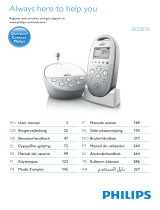 Philips AVENT SCD570/10 User manual
Philips AVENT SCD570/10 User manual
-
Philips AVENT SDC525/00 User manual
-
Philips AVENT SCD560 User manual
-
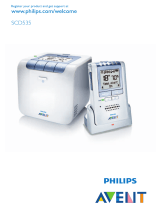 Philips AVENT SCD535/00 User manual
Philips AVENT SCD535/00 User manual
-
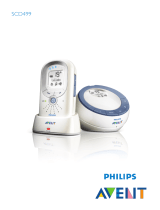 Philips AVENT SCD499 Avent User manual
Philips AVENT SCD499 Avent User manual
-
Philips AVENT SCD600 User manual
-
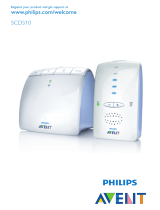 Philips AVENT SCD510 User manual
Philips AVENT SCD510 User manual
-
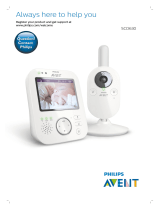 Philips AVENT SCD630 User manual
Philips AVENT SCD630 User manual
-
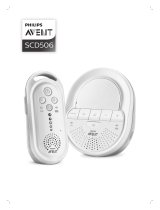 Philips AVENT SCD506 Avent User manual
Philips AVENT SCD506 Avent User manual
-
Philips SCD481 User manual
Other documents
-
Avent SCD525/00 User manual
-
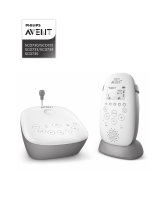 Avent SCD731/52 User manual
Avent SCD731/52 User manual
-
Alecto DBX-88 ECO Owner's manual
-
Philips Avent SCD603/01 Digital Video Baby Monitor User manual
-
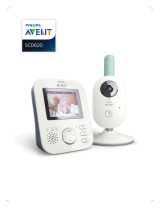 Avent SCD620/78 User manual
Avent SCD620/78 User manual
-
Avent SCD603/00 User manual
-
Avent SCD520/00 User manual
-
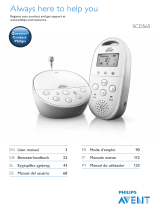 Avent SCD565/00 User manual
Avent SCD565/00 User manual
-
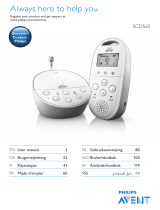 Avent SCD565/00 User manual
Avent SCD565/00 User manual
-
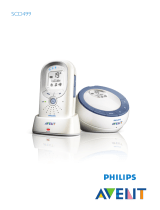 Avent SCD499/00 User manual
Avent SCD499/00 User manual


































































































































































































































